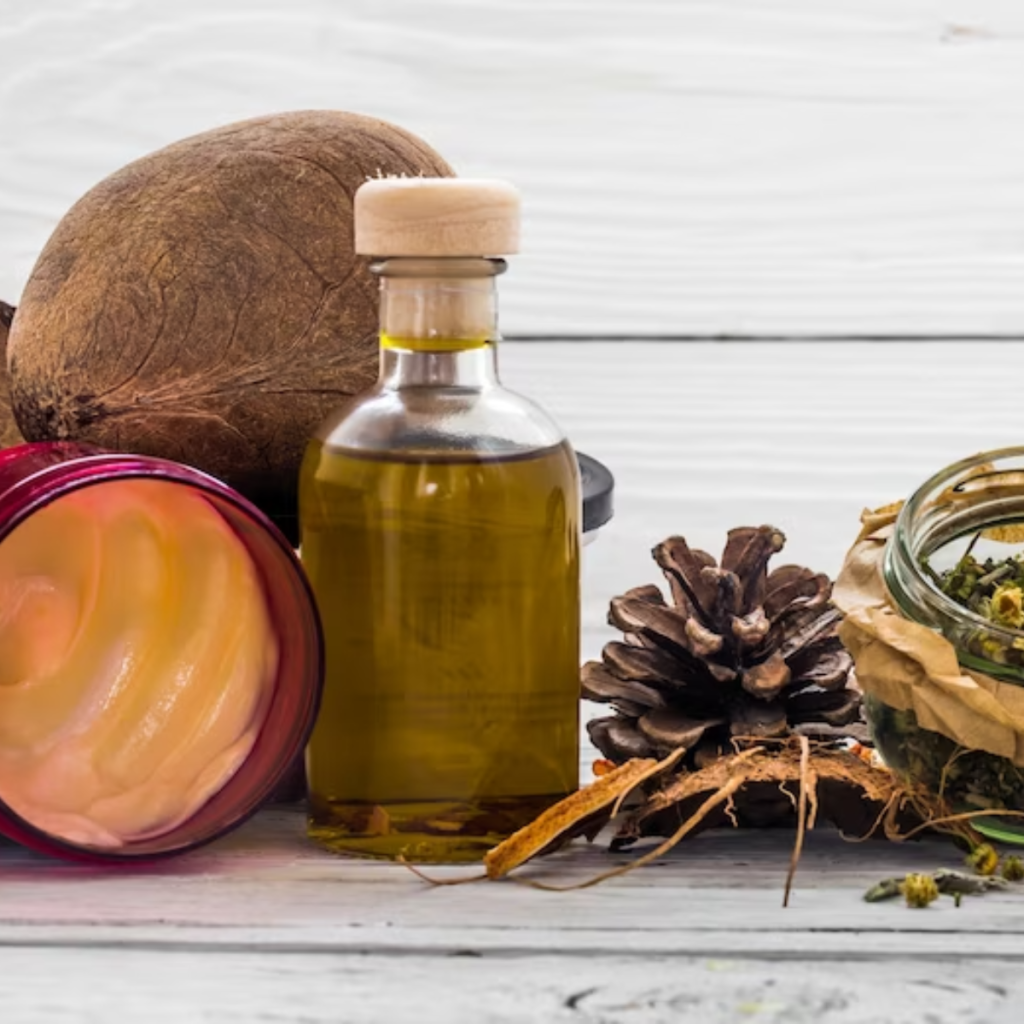Discover the power of essential oils and herbs in providing natural relief for back pain.
Exploring Essential Oils and Herbs for Back Pain Relief
Are you tired of dealing with nagging back pain day after day? If so, you’re not alone. Back pain is a common ailment that affects millions of people worldwide. While there are many traditional treatments available, why not explore a natural approach? In this article, we’ll dive into the world of essential oils and herbs for back pain relief. Get ready to discover some soothing solutions that may just become your new best friends!

Understanding the Causes of Back Pain
Before we embark on our exploration of essential oils and herbs, it’s important to understand the causes of back pain. There are several factors that can contribute to this discomfort, ranging from muscle strains to spinal conditions.
Back pain is a common ailment that affects millions of people worldwide. It can be debilitating and greatly impact one’s quality of life. By understanding the causes of back pain, we can better address and manage this condition.
One of the most common causes of back pain is muscle strain. This can occur from lifting heavy objects, improper posture, or sudden movements. When the muscles in the back are strained, they can become inflamed and painful. This type of back pain is often acute and can be relieved with rest and proper care.
In addition to muscle strain, there are several other conditions that can lead to back pain. Herniated discs, also known as slipped discs, occur when the soft tissue between the vertebrae in the spine becomes damaged or ruptured. This can cause pain and discomfort, as well as numbness or tingling in the affected area.
Osteoarthritis, a degenerative joint disease, can also contribute to back pain. This condition occurs when the cartilage that cushions the joints wears down over time, causing the bones to rub against each other. This can lead to inflammation and pain in the back.
Spinal stenosis, a narrowing of the spinal canal, is another common cause of back pain. This condition can put pressure on the nerves in the spine, causing pain, numbness, and weakness in the back and legs.
Common Causes of Back Pain
One of the most common causes of back pain is muscle strain. This can occur from lifting heavy objects, improper posture, or sudden movements. Additionally, herniated discs, osteoarthritis, and spinal stenosis are all conditions that can lead to back pain.
It’s important to note that back pain can also be caused by underlying medical conditions such as kidney stones, infections, or tumors. In some cases, back pain may be a symptom of a more serious condition and should be evaluated by a healthcare professional.
The Impact of Lifestyle Factors on Back Pain
Believe it or not, your lifestyle can play a significant role in back pain. Factors such as obesity, lack of exercise, and poor nutrition can contribute to the development and severity of back pain. Making positive changes in these areas can help alleviate discomfort.
Obesity, or being significantly overweight, puts extra strain on the back and can lead to chronic pain. The excess weight can cause the spine to become misaligned, leading to muscle imbalances and increased pressure on the joints. Losing weight and maintaining a healthy body weight can help reduce the risk of back pain.
Lack of exercise and sedentary behavior can also contribute to back pain. When we don’t engage in regular physical activity, our muscles become weak and less able to support the spine. This can lead to increased stress on the back and a higher likelihood of experiencing pain. Incorporating regular exercise, such as walking or swimming, into your routine can help strengthen the muscles and improve overall back health.
Poor nutrition can also impact back pain. A diet lacking in essential nutrients, such as calcium and vitamin D, can weaken the bones and increase the risk of conditions like osteoporosis. This can make the back more susceptible to injury and pain. Eating a balanced diet that includes plenty of fruits, vegetables, and lean proteins can help support bone health and reduce the risk of back pain.
In conclusion, understanding the causes of back pain is crucial in effectively managing and preventing this common condition. Muscle strain, herniated discs, osteoarthritis, and spinal stenosis are all potential causes of back pain. Lifestyle factors such as obesity, lack of exercise, and poor nutrition can also contribute to the development and severity of back pain. By making positive changes in these areas and seeking appropriate medical care, individuals can reduce their risk of experiencing back pain and improve their overall well-being.
Introduction to Essential Oils for Back Pain Relief
Now that we have a better understanding of the causes of back pain, let’s dive into the world of essential oils. Essential oils are highly concentrated plant extracts that have been used for centuries for their therapeutic properties.
Essential oils have a long and fascinating history. The ancient Egyptians were known to use essential oils for medicinal and cosmetic purposes. They believed in the power of these oils to heal the body and enhance beauty. In fact, essential oils were considered so precious that they were often used as currency.
What makes essential oils so special is their ability to capture the essence of a plant. They are derived from various parts of plants, including the flowers, leaves, and stems. These aromatic compounds have been found to have a range of health benefits.
What are Essential Oils?
Essential oils are derived from various parts of plants, including the flowers, leaves, and stems. They contain the natural aromatic compounds that give plants their distinct scents and flavors. These aromatic compounds have been found to have a range of health benefits.
Each essential oil has its own unique composition of aromatic compounds, which gives it its specific therapeutic properties. For example, lavender essential oil is known for its calming and relaxing effects, while peppermint essential oil is invigorating and energizing.
Essential oils are extracted through a process called steam distillation. This involves using steam to separate the volatile compounds from the plant material. The resulting liquid is highly concentrated and potent.
How Essential Oils Can Help Relieve Back Pain
When it comes to back pain relief, essential oils can provide a soothing effect. They can help reduce inflammation, ease muscle tension, and promote relaxation. Plus, many essential oils have analgesic properties that can help alleviate pain.
One of the key ways essential oils work is through their ability to penetrate the skin and enter the bloodstream. Once absorbed, they can target the source of pain and inflammation, providing relief from within.
Essential oils can be used in a variety of ways to relieve back pain. They can be applied topically, either directly to the affected area or diluted with a carrier oil. They can also be inhaled through aromatherapy or added to a warm bath for a relaxing soak.
It’s important to note that while essential oils can be a helpful addition to a back pain relief regimen, they should not be used as a substitute for medical treatment. If you’re experiencing severe or chronic back pain, it’s always best to consult with a healthcare professional.
Popular Essential Oils for Back Pain Relief
Now that you’re familiar with the basics of essential oils, let’s explore some popular options for back pain relief.

Lavender Oil: A Soothing Solution for Back Pain
Lavender oil is well-known for its calming properties. It can help relax both the body and mind, making it an excellent choice for relieving stress-related back pain. Additionally, lavender oil has anti-inflammatory properties that can help reduce swelling and discomfort.
Peppermint Oil: Cooling Relief for Back Pain
If you’re looking for a refreshing way to soothe your back pain, look no further than peppermint oil. Its cooling sensation can help numb the area and provide temporary relief. Plus, peppermint oil has analgesic properties that can help alleviate pain.
Eucalyptus Oil: A Natural Analgesic for Back Pain
If you’re searching for a natural pain reliever, eucalyptus oil is a great option. It contains a compound called eucalyptol, which has both analgesic and anti-inflammatory properties. Applying eucalyptus oil to your back can help reduce pain and inflammation, allowing you to find relief.
Exploring Herbs for Back Pain Relief
While essential oils are a fantastic natural remedy for back pain relief, herbs can also play a significant role in your healing journey.
Turmeric: A Powerful Anti-Inflammatory Herb for Back Pain
If you’re looking for an herb with potent anti-inflammatory properties, turmeric is the way to go. Curcumin, the active compound in turmeric, has been shown to reduce inflammation and provide pain relief. Incorporating turmeric into your diet or taking it in supplement form can help alleviate back discomfort.
Ginger: A Natural Pain Reliever for Back Pain
Ginger is another herb that can provide natural pain relief for your back. It contains gingerol, a compound that has anti-inflammatory and analgesic properties. Drinking ginger tea or adding ginger to your meals can help reduce inflammation and ease pain.
Devil’s Claw: An Herb with Analgesic Properties for Back Pain
Don’t let the name scare you away – devil’s claw is a herb with some remarkable pain-relieving abilities. It has been used for centuries to alleviate various types of pain, including back pain. Devil’s claw contains compounds called harpagosides, which have analgesic properties. Incorporating devil’s claw into your routine may provide the relief you’ve been searching for.
How to Use Essential Oils and Herbs for Back Pain Relief
Now that you have a variety of essential oils and herbs to choose from, it’s essential to know how to use them effectively.
Topical Application Methods for Essential Oils
When applying essential oils topically, it’s important to dilute them with a carrier oil to prevent skin irritation. Massage the diluted oil into the affected area, using gentle circular motions. You can also add essential oils to a warm bath or use them in a compress.
Incorporating Herbs into Your Diet for Back Pain Relief
Incorporating herbs into your diet is an excellent way to reap their healing benefits. Add turmeric and ginger to your meals, or brew them into a tea. Alternatively, you can take herbal supplements, ensuring you follow the recommended dosage.
Precautions and Safety Guidelines for Using Essential Oils and Herbs
While essential oils and herbs can be beneficial, it’s crucial to use them safely. Some people may be allergic to certain oils or herbs, so it’s essential to perform a patch test before using them. Additionally, pregnant women, children, and those with underlying health conditions should consult with a healthcare professional before using essential oils or herbs.
Now that you’re armed with the knowledge of essential oils and herbs for back pain relief, it’s time to give them a try. Experimentation is key, as different remedies may work better for different individuals. Soothe your back pain naturally and embark on a journey of healing and self-care. Your back will thank you!



